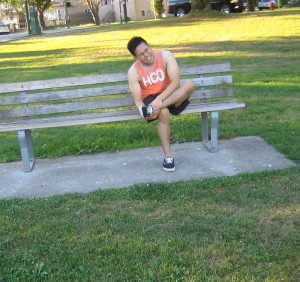The plantar fascia is a sheet or band of fibrous tissue that stretches over a muscle or other body organ. The plantar fascia or aponeurosis plantaris is attached on the interior side of the calcaneus or heel bone that runs up to the toes along the base of the foot. Plantar fasciitis develops once this sheath of tissue becomes swollen. A partial or complete tear to the damaged fascia will follow. If you want to learn more about this injury, read more.
It is important to note that the plantar fascia is responsible for support and flexes with the movement of the foot. As a sheet, the plantar fascia provides stability to the step while encouraging proper heel-toe contact with the ground. Take note that the plantar fascia basically inserts at the heel and then fans out to cover the whole bony part of the sole of the foot.

Possible causes
Any injury to the plantar fascia relates directly to the stress on the affected area. The stress can be triggered by strenuous running, workouts and engaging in strenuous sports but there are also other activities that can irritate the fascia. Ill-fitting shoes, obesity and abrupt weight gain can eventually lead to plantar fasciitis and progress to the rupture of the plantar fascia.
What are the symptoms of a torn plantar fascia?
The heel and arch pain typically occurs right away among those who have a torn plantar fascia. An individual who engages in sports can suffer from difficulty placing his/her heel on the ground. The severe discomfort occurs when getting out of the bed upon waking up in the morning. Take note that the pain triggered by touching the heel to the floor will prevent normal walking.
Treatment
The application of an ice pack must be applied on the elevated foot during the initial 24-48 hours to help minimize the inflammation. In most cases, the foot must be allowed to rest for 3-4 weeks. Limited walking with the heel elevated can provide the quickest relief. The use of crutches or a cane can help with mobility while allowing the heel to stay in an elevated position. The gradual use and stretching of the foot will slowly increase the flexibility. In such cases, an anti-inflammatory can be used to reduce the pain and hasten the healing process. The individual should temporarily avoid the activity that started to prevent the relapse of the symptoms.
Preventive measures
It is important to pay close attention to the warning signs of imminent injury so that the individual can adjust the intensity level accordingly. Proper stretching should be performed before any sport or exercise. Once the body is warmed up, the muscles and supporting tissues are less prone to injury. The individual should also aim for a healthy body weight in order to reduce the risk of injury to the feet and other body parts.
